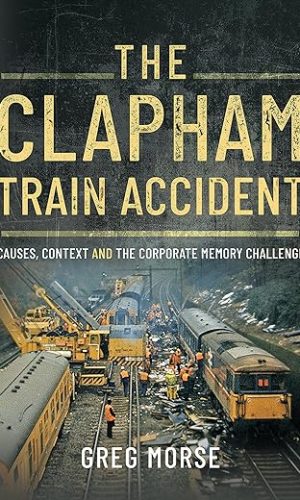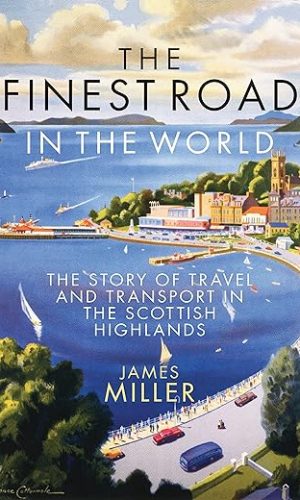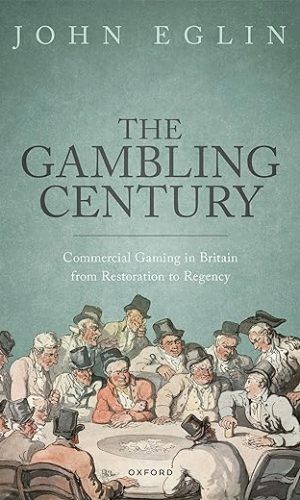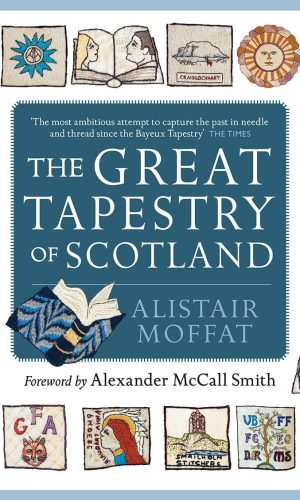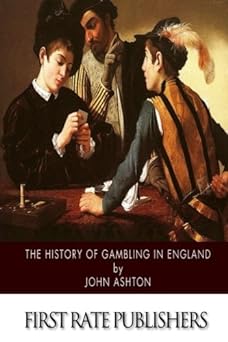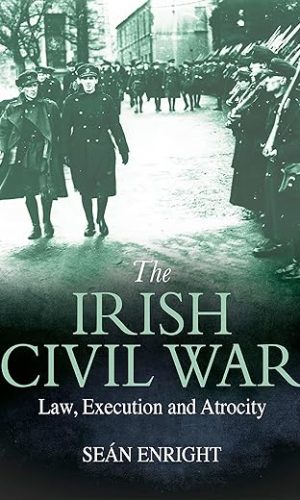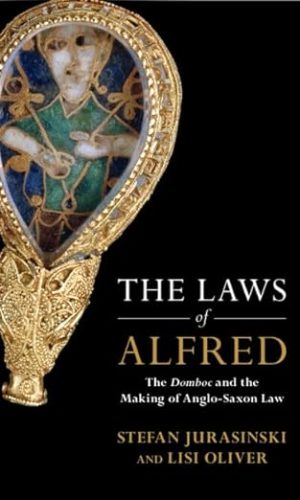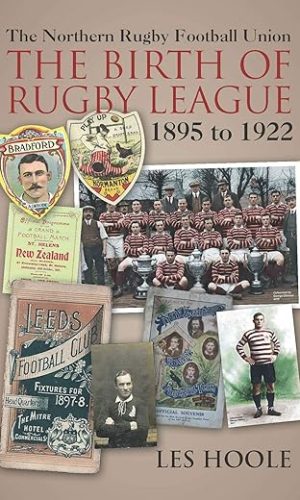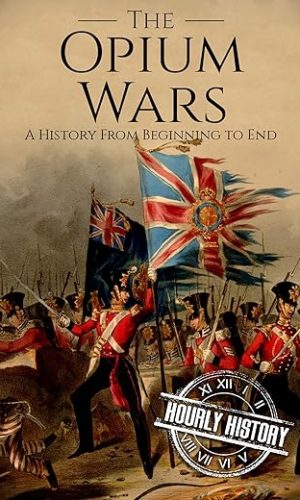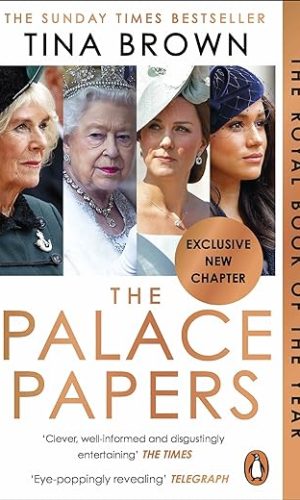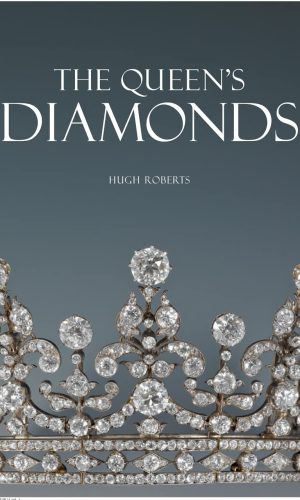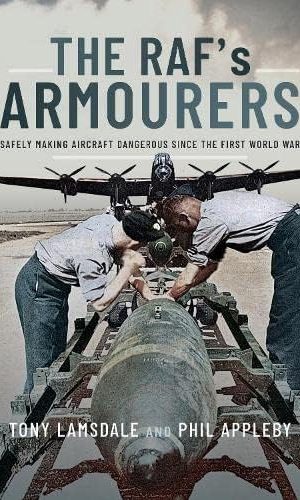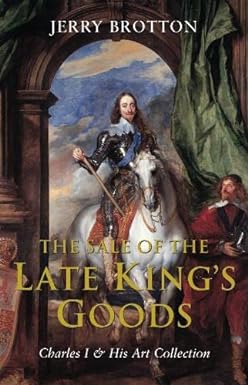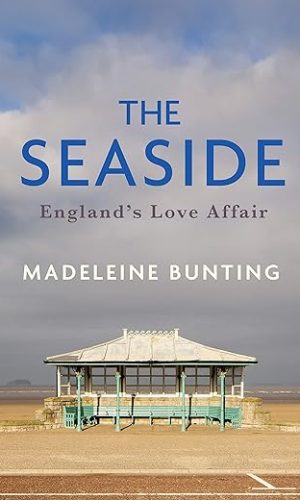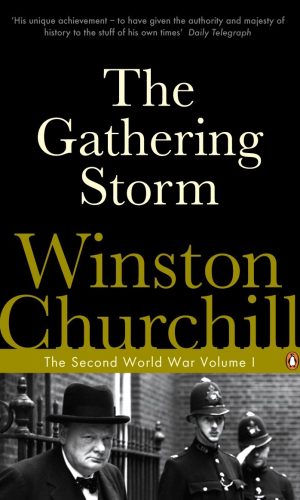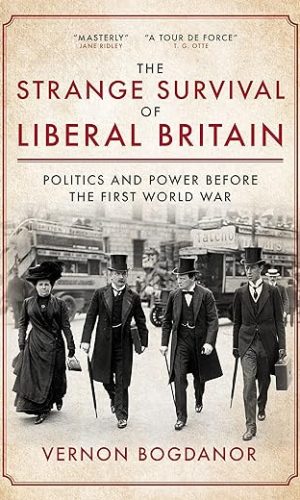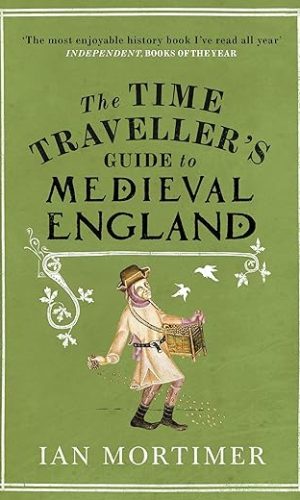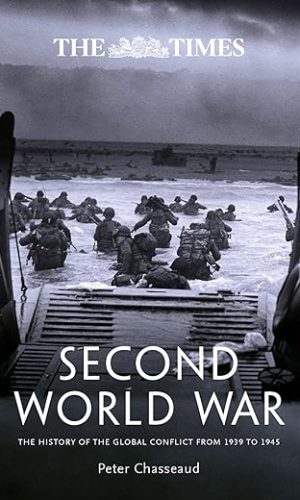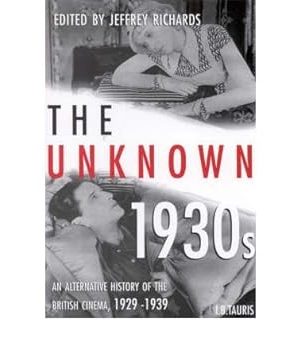Great Britain
-
The British Transport Commission Group: Former Thomas Tilling Companies in the 1960s
This fascinating and informative book looks at the Tilling Group of bus companies during the 1960s. These operated approximately half of the inter-urban and rural bus services in England and Wales, and were nationalised by Clement Attlee’s Labour Government in 1948 under the control of the British Transport Commission. Ownership passed to the Transport Holding Company Ltd in 1963, though the fleets remained under Tilling Group control. During the period covered by this book, the operators within the group had very standardised fleets, with the vast majority of their buses and coaches having Bristol chassis and Eastern Coachworks (ECW) bodywork. This was a result of these manufacturers also having been nationalised and controlled by the BTC and THC. However, some Tilling Group operators still had earlier vehicles with, for instance, AEC or Leyland chassis, which were acquired prior to the requirement for them to buy only Bristol products, whilst some also had coaches with Bedford or Ford Thames chassis built in the 1950s and 1960s. Unlike the BET fleets throughout England and Wales, most Tilling fleets also had highly standardised liveries, either of red with cream relief, or green with cream relief for their stage carriage buses, or the reverse of this for their coaches. There were some exceptions, though. The most obvious ones were Midland General and Notts & Derby, whose livery was an attractive dark blue and cream; as well as the Royal Blue coaches of Southern and Western National and the maroon and cream coaches of Thames Valley subsidiary South Midland. All Tilling Group companies became part of the National Bus Company in early 1969, and before long their traditional liveries became just a memory when the NBC imposed standard red or green liveries. Throughout most of the 1960s, Jim Blake travelled to these operators and photographed their vehicles, and spent many summer Saturdays at London’s Victoria Coach Station, where their service buses as well as express coaches could be seen. He was fortunate to capture much of this changing transport scene on film, and presents some of these photographs in this volume. Many have never been published before.Read more
£11.70£23.80 -
The Clapham Train Accident: Causes, Context and the Corporate Memory Challenge
Clapham was a pivotal point in British railway history. Much technology had been invented and applied to accident prevention by 1988; much more was to come. The Clapham Train Accident considers Clapham in its wider context, using official reports and expert interviews to describe both the causes and the terrible effects. It looks beyond the railway to the external factors acting not only on British Rail, but also the government of the time, and considers the safety improvements that came about as a result. Finally, the book brings the story up to date and looks at why the lessons learned over thirty years ago still need to be retained in an industry where the baton of safety is all-too-easily dropped during re-organisation, re-branding and after the departure of those who lived through darker days to make ours shine more brightly. The concatenation of events, the errors, the reorganisations, the financial constraints, that led to Clapham could happen to any business in any industry. On the morning of 12 December 1988, they happened to the railway. The Clapham Train Accident will act as a cautionary tale for safety practitioners old and new, not just in rail, but also other safety critical industries. It will help readers think actions through to all consequences, helping them too to make safer decisions, particularly when changing a system, technology or method of workingRead more
£12.20 -
The Classic Car Spotters’ Guide: What to See at Britain’s Car Shows
Not so many years ago most of the cars featured in this book were familiar sights on Britain’s roads. Now, the remaining examples – the ones that weren’t crashed, bashed, thrashed, stolen or scrapped – are reminders of simpler times and simpler technology.
During Britain’s spring and summer, thousands of owners polish their cherished motors before driving them to classic car shows and lining them up for inspection by an adoring public. Cars that were once seen so often they blended into the street furniture are now rare enough to rub fenders with the more obvious classics of the age. There are 1.5 million older motors that are still regularly driven around Britain today, and The Classic Car Spotters’ Guide takes you through more than fifty prime examples, from Ford Cortinas and Austin 1100s to Borgward Isabellas and Austin Nash Metropolitans. Complete with rarity ratings and backstories for each one, this book is the perfect companion for your next event.
Read more
£11.70£14.20 -
The Deorhord: An Old English Bestiary
‘A dream! I learnt something new and fascinating on every page’ Lucy Mangan
‘If you love words, the weird and the wild, I guarantee you’ll crouch over this book like a dragon over gold’ Meg Clothier
‘Endlessly fascinating’ – the Spectator
Many of the animals we encounter in everyday life, from the creatures in our fields to those in our fantasies, have remained the same since medieval times – but the words we use, and the ways we describe them, have often changed beyond recognition…
Old English was spoken over a thousand years ago, when every animal was a deor. In this glittering Old English bestiary we find deors big and small, the ordinary and the extraordinary, the good, the bad and the downright baffling. From walker-weavers (spiders) and grey-cloaked ones (eagles) to moon-heads and teeth-tyrants (historians still don’t know!), we discover a world both familiar and strange: where ants could be monsters and panthers could be your friend, where dog-headed men were as real as elephants and where whales were as sneaky as wolves.
From the author of The Wordhord comes another delightful dive into the realm of Old English – words and creatures that will change the way you see the world.
Read more
£12.30£15.20The Deorhord: An Old English Bestiary
£12.30£15.20 -
The English Civil War in 100 Facts
The English Civil War pitted Parliament against the Crown following a breakdown in their relationship, ultimately caused by a struggle over power, religion and control. The Civil War split the country and resulted in the execution of Charles I and the exile of his son, and the English monarchy was replaced first by the Commonwealth of England and then the Protectorate. Oliver Cromwell dominated the politics of the new rule and still divides opinion today, with some seeing him as a brutal dictator and others seeing him as a hero of liberty. The English Civil War in 100 Facts examines the twenty years of intermittent warfare, covering the first, second and third wars, from the initial conflict with Charles I to the fight of Charles II’s supporters with the Rump Parliament. Dr Andrew Lacey guides us through some of the key figures and their stories as well as some of the key battles and politics in this period that drastically altered the structure of English rule.Read more
£7.10£8.50The English Civil War in 100 Facts
£7.10£8.50 -
The Factory that Became a Village: The History of the Royal Small Arms Factory at Enfield Lock (Lea Valley Series)
When Jim Lewis met the directors of the RSA Trust, the charity responsible for the concept and the running of Enfield Island Village, in January 2015, it was to discuss the commissioning of a book that would tell the story of the former government controlled Royal Small Arms Factory (RSAF) after privatisation and closure in 1987. However, during discussions it soon became clear, with the impending two-hundredth anniversary of the birth of the Enfield Lock armoury, that a unique opportunity existed to link the story of the RSAF site with the founding of the RSA Trust. And as one Trust director put it, this is the classic story of from swords into ploughshares. Surprising as it may seem, the story of the birth of the Enfield Lock armoury in 1816 and the methods of manufacture that then existed within the British small arms industry has never been completely told.
At the time of writing this book the author wanted, in the two-hundredth anniversary year of the founding of the RSAF, to commemorate the contribution made to our armed forces by the former workforce which, by their skills and dedication, helped keep Britain safe during times of world instability. Also I wanted to acknowledge the contribution made to our community by the four founding fathers of the RSA Trust that has benefited so many worthwhile good causes.
In a world full of increasingly depressing news it is uplifting to have the opportunity to write about a group of four local businessmen who had the vision, courage and tenacity to take on the mammoth task of rescuing a Grade II listed building that no sane entrepreneur would have contemplated taking on and turn it into a vibrant sustainable business for the benefit of the local community. The model created pays a service charge into a limited liability company, RSA IV, which in turn transfers the surplus to the not-for-profit RSA Trust which is then able to fund many community good causes.
Read more
£11.80£17.10 -
The Finest Road in the World: The Story of Travel and Transport in the Scottish Highlands
Trains and stagecoaches stuck in the snow, wild storms driving sailing ships off course, traffic pile-ups on so-called ‘killer’ highways – stories abound about the horrors of travel in the Highlands and Islands, and have done for as far as the records go back.
James Miller tells the dramatic and sometimes surprisingly humorous story of travel and transport in the Highlands. Some of the figures in the story are familiar – General George Wade, Thomas Telford and Joseph Mitchell among them – but there are a host of others too, including the intrepid Lady Sarah Murray, who offered sound advice for travellers (‘Provide yourself with a strong roomy carriage, and have the springs well corded’).
This thought-provoking book will appeal to all who like stories of travel and transport, and are interested in how changing modes of transport have affected the ways of life in the Highlands and remain crucial to the modern life and the future of the region.
Read more
£2.90 -
The Gambling Century: Commercial Gaming in Britain from Restoration to Regency
Gambling captures as nothing else the drama of the “long eighteenth century” between the age of religious wars and the age of revolutions. The society that was confronted with games of chance pursued as commercial ventures also came to grips with unprecedented social mobility, floated by new wealth from new sources that created fortunes from trade in sugar, cotton, ivory, silk, tea, or enslaved human beings. Likewise, play for money was prominent in the
public imagination as money itself, deployed through an ever expanding and ever more sophisticated range of mechanisms, increasingly invaded public awareness, as when prospective spouses in period fiction were rated in terms of annual income as if they were municipal bonds. Similarly, the archetypal figure of the
gambler captured the imagination of the public in fiction, media, and politics. At the same time, new interest in science, technology, engineering, and mathematics – encouraged and bankrolled by those in power – fostered a new and unprecedented appreciation for mathematical probability and its applications, opening the possibility that games of chance might be pursued as a profitable commercial venture.The Gambling Century focuses like no previous work on those who enabled, facilitated, and profited from gambling, as well as on efforts to regulate or outlaw it. Using extensive archival material as well as printed sources, it follows its subjects from the Court to the coffeehouse, to private clubs and “at homes” in townhouses, all of which prefigure that quintessentially modern gambling space, the casino.
Read more
£19.80 -
The Great Tapestry of Scotland
The Great Tapestry of Scotland is an outstanding celebration of thousands of years of Scottish history and achievement, from the end of the last Ice Age to Dolly the Sheep and Andy Murry’s Wimbledon victory of 2013. More than 1000 stitchers spent a total of 55,000 sewing hours on the 160 panels that make up this extraordinary work of art.
This book shows in full colour all the finished panels of the tapestry – one of the biggest community arts projects ever to take place in Scotland – together with descriptive and explanatory material on each panel and lists of all the stitchers involved.
Read more
£25.50£28.50The Great Tapestry of Scotland
£25.50£28.50 -
The History of Gambling in England
This is a history of different types of gambling over the centuries in England, from cards to horse races. From the intro: “Gaming is derived from the Saxon word Gamen, meaning joy, pleasure, sports, or gaming—and is so interpreted by Bailey, in his Dictionary of 1736; whilst Johnson gives Gamble—to play extravagantly for money, and this distinction is to be borne in mind in the perusal of this book; although the older term was in use until the invention of the later—as we see in Cotton’s Compleat Gamester (1674), in which he gives the following excellent definition of the word:—“Gaming is an enchanting witchery, gotten between Idleness and Avarice: an itching disease, that makes some scratch the head, whilst others, as if they were bitten by a Tarantula, are laughing themselves to death; or, lastly, it is a paralytical distemper, which, seizing the arm, the man cannot chuse but shake his elbow. It hath this ill property above all other Vices, that it renders a man incapable of prosecuting any serious action, and makes him always unsatisfied with his own condition; he is either lifted up to the top of mad joy with success, or plung’d to the bottom of despair by misfortune, always in extreams, always in a storm; this minute the Gamester’s countenance is so serene and calm, that one would think nothing could disturb it, and the next minute, so stormy and tempestuous that it threatens destruction to itself and others; and, as he is transported with joy when he wins, so, losing, is he tost upon the billows of a high swelling passion, till he hath lost sight, both of sense and reason.” Gambling, as distinguished from Gaming, or playing, I take to mean an indulgence in those games, or exercises, in which chance assumes a more important character; and my object is to draw attention to the fact, that the money motive increases, as chance predominates over skill. It is taken up as a quicker road to wealth than by pursuing honest industry, and everyone engaged in it, be it dabbling on the Stock Exchange, Betting on Horse Racing, or otherwise, hopes to win, for it is clear that if he knew he should lose, no fool would embark in it. The direct appropriation of other people’s property to one’s own use, is, undoubtedly, the more simple, but it has the disadvantage of being both vulgar and dangerous; so we either appropriate our neighbour’s goods, or he does ours, by gambling with him, for it is certain that if one gains, the other loses. The winner is not reverenced, and the loser is not pitied. But it is a disease that is most contagious, and if a man is known to have made a lucky coup, say, on the Stock Exchange, hundreds rush in to follow his example, as they would were a successful gold field discovered—the warning of those that perish by the way is unheeded.”Read more
£5.20 -
The Hundred Years War: 1337–1453 (Essential Histories)
An illustrated overview of the Hundred Years War, the longest-running and the most significant conflict in western Europe in the later Middle Ages.There can be no doubt that military conflict between France and England dominated European history in the 14th and 15th centuries. The Hundred Years War is of considerable interest both because of its duration and the number of theatres in which it was fought.
Drawing on the latest research for this new edition, Hundred Years War expert Professor Anne Curry examines how the war can reveal much about the changing nature of warfare: the rise of infantry and the demise of the knight; the impact of increased use of gunpowder and the effect of the war on generations of people.
Updated and revised for the new edition, with full-colour maps and 50 new images, this illustrated introduction provides an important reference resource for the academic or student reader as well as those with a general interest in late medieval warfare.
Read more
£9.50£12.30 -
The Ingenious Victorians: Weird and Wonderful Ideas from the Age of Innovation
We all know that some of the greatest inventions came from the Victorian age, the successors of which are still with us today. But this book is not entirely about those. It’s more about some of the weird and wonderful inventions, ideas and projects – some successful, others less so – that have largely been forgotten. Where well-known inventions or design concepts are included, it is from a perspective not previously appreciated, with details of the ingenious technology and thinking that led to their introduction and success. Here you can read how Victorian innovators were responsible for: the world’s largest glass structure; an electric railway with lines under the sea and a carriage on stilts 20 feet above the waves; a monster globe that visitors could enter to see the world’s land masses, seas, mountains and valleys modelled on the interior; cameras disguised as bowler hats and many other everyday objects; the London Underground as a steam railway; safety coffins designed to prevent premature burial; unusual medical uses for electricity; the first traffic lights, which exploded a month after their erection in Westminster; and the birth and rapid rise to popularity of the cinema …as well as many other ingenious inventions.Read more
£14.20 -
The Irish Civil War: Law, Execution and Atrocity
During the Irish Civil War eighty-three executions were carried out by the National Army of the emerging Free State government, including four prisoners not tried or convicted of any charge. After the war the trial records were destroyed and the execution policy became a bitter memory that was rarely discussed. In this groundbreaking work, Seán Enright examines how a climate emerged in which prisoners could be tried by rudimentary military courts and then executed, and how so many other prisoners were killed without any trial at all.
The government of the emerging state relied on the National Army to fight the war and implement policy, but the National Army was new and lacked discipline. More than 125 further prisoners were killed in the custody of the state; shot at the point of capture or killed in custody. ‘Shot while trying to escape’ became an all too familiar press release. Seventeen prisoners were killed in the Kerry landmine massacres alone.
In the struggle to survive, the new state turned a blind eye and the rule of law simply unravelled. Featuring new material from the Irish Military Archives, The Irish Civil War: Law, Execution and Atrocity examines the dark legacy of this chaotic and bitter conflict.
Read more
£10.90£12.30The Irish Civil War: Law, Execution and Atrocity
£10.90£12.30 -
The Laws of Alfred: The Domboc and the Making of Anglo-Saxon Law (Studies in Legal History)
Alfred the Great’s domboc (‘book of laws’) is the longest and most ambitious legal text of the Anglo-Saxon period. Alfred places his own laws, dealing with everything from sanctuary to feuding to the theft of bees, between a lengthy translation of legal passages from the Bible and the legislation of the West-Saxon King Ine (r. 688–726), which rival his own in length and scope. This book is the first critical edition of the domboc published in over a century, as well as a new translation. Five introductory chapters offer fresh insights into the laws of Alfred and Ine, considering their backgrounds, their relationship to early medieval legal culture, their manuscript evidence and their reception in later centuries. Rather than a haphazard accumulation of ordinances, the domboc is shown to issue from deep reflection on the nature of law itself, whose effects would permanently alter the development of early English legislation.Read more
£21.80 -
The London Underground, 1968-1985: The Greater London Council Years
LONDON’S HISTORIC, iconic Underground railway system in the period from 1968 to 1985 was a very different place to what it is in the 2020s. Much of its rolling stock dated from before World War Two, and with the exception of the new Victoria Line and the isolated Woodford to Hainault shuttle, trains were all two-person operated as the 1970s dawned. Transport photographer Jim Blake recorded most of the system on film before it would change forever, concentrating on the older rolling stock as well as other items of interest due for replacement or modernisation, during this period when, regrettably, London Transport was often starved of much-needed funds by central government. The eminently sensible transfer of overall control of London’s buses and Underground system to the city-wide Greater London Council at the beginning of 1970 was snatched away by the Thatcher regime in 1984, after which things rapidly went downhill. This book covers the years of GLC control, including the months prior to their taking charge in order to set the scene. Many rare and unusual scenes are included in this volume, especially of the then still basically intact portion of the uncompleted Northern Line extension between Drayton Park and Highgate, which had been so close to completion when work was halted during the war, but then abandoned in the early 1950s, incurring much wasted work and expenditure. For anyone with a serious interest in London’s Underground, this book is essential reading, including as it does many pervious unpublished photographs.Read more
£20.00£23.80 -
The Long War for Britannia 367–664: Arthur and the History of Post-Roman Britain
This history of early medieval Britain sheds light on the real King Arthur and settles longstanding historical misconceptions about the period.
The Long War for Britannia examines some two centuries of ‘lost’ British history, while providing decisive proof that the early records of the time are far more reliable than many scholars believe. Historian Edwin Pace also demonstrates that King Arthur and Uther Pendragon are the very opposite of medieval fantasy—even if different British regions had very different memories of these post-Roman British rulers.
Some remembered Arthur as the ‘Proud Tyrant’, a monarch who plunged the island into civil war. Others recalled him as the British general who saved Britain when all seemed lost. The deeds of Uther Pendragon replicate the victories of the dread Mercian king Penda. Pace demonstrates how these authentic—yet radically different—narratives have distorted the historical record in way that persist today.
Read more
£2.80 -
The Marriage of Heaven and Hell: A Facsimile in Full Color (Dover Fine Art, History of Art)
This vivid facsimile of Blake’s romantic and revolutionary publication offers a concise expression of his essential wisdom and philosophy. His distinctive hand-lettered text is accompanied by 27 color plates of his stirring illustrations.Read more
£6.50£7.10 -
The Northern Rugby Football Union. The Birth of Rugby League. 1895 to 1922: The Birth of Rugby League 1895-1922
On Thursday 29th August 1895, 21 of the leading rugby union clubs of Lancashire and Yorkshire met at the George Hotel in Huddersfield to discuss their long running disagreement with the rugby football union. Little did they know what was to follow. The clubs decided that they had suffered enough of the control of the southern gentry and formed their own northern rugby football union and split from the rugby football union. It was the beginning of a dispute that would continue for almost a hundred years. The new northern union thrived, and many clubs soon joined, however, with little coherent strategy or assistance from the union, many folded within a few years. The stronger clubs and the union itself survived those initial chaotic times and continued to create the structure and competitions that have evolved to create the game of rugby league football we know today. This new book illustrates the birth of the northern union in 1895 to the 1922 name change to the rugby league with hundreds of rare images of the early teams and individuals who had the courage to take that enormous leap in the dark.Read more
£12.20£14.20 -
The Opium Wars: A History From Beginning to End (History of China)
Discover the remarkable history of the Opium Wars…
Free BONUS Inside!
Violent confrontation between armed groups over the supply of illegal narcotics is something we commonly associate with criminal gangs in modern cities, but in the mid-nineteenth century Great Britain went to war with Imperial China in order to continue to supply Chinese addicts with opium. The two wars which followed have become known as the Opium Wars, and they led to the utter defeat of China, the establishment of a British colony in Hong Kong, and the continuation of a narcotics trade that was worth millions of pounds each year to the British.
The Opium Wars exposed the weaknesses of the Chinese Qing dynasty in terms of its military abilities and internal corruption. They also exposed divisions in Victorian Britain where people were beginning to question the morality of going to war to support an illegal narcotics trade which caused misery and death for millions of Chinese. In the end, the British were able to overcome their reservations and prosecuted these two wars with great success. British casualties were small and the gains enormous—the British opium trade to China would continue for more than fifty years after the end of the Second Opium War.
For the Chinese Qing dynasty, the Opium Wars marked the beginning of the end. Imperial China had endured for two thousand years, but within fifty years of the humiliations of the Opium Wars, a revolution overthrew the imperial court and turned China into a republic. Although they are little remembered today, the Opium Wars changed the face not just of China but also of the whole of Asia. This is the story of those wars.
Discover a plethora of topics such as
- The Joy Plant
- Outbreak of the First Opium War
- British Superiority and the Devil Ship
- The Treaty of Nanking: First of the Unequal Treaties
- The Inevitable Second Opium War
- The Fall of Beijing
- And much more!
So if you want a concise and informative book on the Opium Wars, simply scroll up and click the “Buy now” button for instant access!
Read more
£1.90 -
The Palace Papers: The Sunday Times bestseller
WITH AN EXCLUSIVE NEW CHAPTER FOR THE PAPERBACK EDITION
The Amazon No.1 Bestseller
The Sunday Times BestsellerTHE ROYAL BOOK OF THE YEAR
_________________________________‘Eye-poppingly revealing. . . impeccable sources, historical heft and canny insights served up with a zingy wit. There are many royal biographers, but few as good as this. She turns gossip into the first draft of history.’ TELEGRAPH
From the Queen’s stoic resolve to the crisis of Meghan and Harry. From the ascendance of Camilla and Kate to the downfall of Andrew. Full of remarkable inside access, The Palace Papers by Sunday Times bestselling author Tina Brown will change how you understand the Royal Family.
‘Clever, well-informed and disgustingly entertaining’ THE TIMES
‘There are royal books, and there are royal books. But The Palace Papers is in a genre of its own’ RADIO TIMES
‘Jaw dropping! What a book . . . if you ever want to feel like a fly on the wall of any of the palaces, this is it.’
LORRAINE KELLY‘Brown’s prose has the swoosh of an enjoyably OTT ballgown’ FINANCIAL TIMES
‘The world’s sharpish and best-informed royal expert’ PIERS MORGAN
‘Riveting and rigorous’ PANDORA SYKES
‘A witty, rip-roaring read . . . full off perceptive and witty observations’ i Newspaper
‘A rollicking ride through recent royal family history . . . Tina Brown’s sparkling prose and eye for detail enliven an entertaining exposé’ OBSERVER
‘The most explosive royal book of the year’ THE SUN
‘Gloriously irreverent, racily written and often very funny. The early chapters on the long affair between Prince Charles and Camilla read like a non-fiction version of Jilly Cooper’s Rutshire Chronicles’ NEW STATESMAN
‘A motherlode of delectable gossip . . . Brown has produced a work both scholarly and scandalous that makes us think about what the post-Elizabethan world may bring, alternately amusing and horrifying us along the way . . . vivid and richly-embroidered’ INDEPENDENT
‘The devil is in the delicious detail . . . Brown tackles her subjects with the same brio she brought to her years as a highly regarded magazine editor . . . Her access to those who flit around the royals gives her writing an edgy authenticity’ DAILY MAIL
‘Brown thrashes her way through absolutely everything that has happened to the family since the end of the last book in 1997 . . . Charles and Camilla are vividly brought to life in a series of well-researched stories and anecdotes’ SUNDAY TIMES
‘The Palace Papers is a sharp-nibbed observation of a generation of tumult for the House of Windsor, bookended by the deaths of Princess Diana and Prince Philip. It’s a story about media as much as monarchy, and it draws from almost every chapter in Brown’s career in journalism’ FINANCIAL TIMES
‘It’s hard to look away as Tina Brown delves into decades’ worth of royal scandals’ GUARDIAN
‘Utter brilliance . . . a rip-roaring read’ SCOTSMAN
‘A brilliant book. Tina Brown has inside knowledge and writes so well’ LADY ANNE GLENCONNER (author of Lady in Waiting)
_________________________________
‘Never again’, became Queen Elizabeth II’s mantra shortly after Diana’s death. More specifically, there could never be ‘another Diana’ – a member of the family whose global popularity upstaged, outshone, and posed an existential threat to the British monarchy. Picking up where The Diana Chronicles left off, The Palace Papers reveals how the royal family reinvented itself after the traumatic years when Diana’s blazing celebrity ripped through the House of Windsor like a comet.
Tina Brown takes readers on a tour de force journey that shows the Queen’s stoic resolve as she coped with the passing of Princess Margaret, the Queen Mother and her partner for seven decades, Prince Philip, and triumphed in her Jubilee years even as the family dramas raged around her. She explores Prince Charles’s determination to make Camilla his queen, the tension between William and Harry who are on ‘different paths’, the ascendance Kate Middleton, the disturbing allegations surrounding Prince Andrew and Jeffrey Epstein, and Harry and Meghan’s stunning decision to ‘step back’ as senior royals. Despite the fragile monarchy’s best efforts, ‘never again’ seems fast approaching.
Read more
£5.70£10.40The Palace Papers: The Sunday Times bestseller
£5.70£10.40 -
The Pathfinders: The Elite RAF Force that Turned the Tide of WWII
THE SUNDAY TIMES BESTSELLER!
Military History Matters Book of the Year Bronze Award Winner
‘Compelling… sensitive, colourful and moving’ — Saul David, Telegraph
‘Fascinating and utterly gripping’ — James Holland
‘Absorbing’ — Daily Mail Book of the WeekThe incredible story of the crack team of men and women who transformed RAF Bomber Command and helped the Allies deliver decisive victory over Nazi Germany.
The Pathfinders were ordinary men and women from a range of nations who revolutionised the efficiency of the Allies’ air campaign over mainland Europe. They elevated Bomber Command – initially the only part of the Allied war effort capable of attacking the heart of Nazi Germany – from an impotent force on the cusp of disintegration in 1942 to one capable of razing whole German cities to the ground in a single night, striking with devastating accuracy, inspiring fear and loathing in Hitler’s senior command.
With exclusive interviews with remaining survivors, personal diaries, previously classified records and never-before seen photographs, The Pathfinders brings to life the characters of the airmen and women – many barely out of their teens – who took to the skies in legendary British aircraft such as the Lancaster and the Mosquito, facing almost unimaginable levels of violence from enemy fighter planes to strike at the heart of the Nazi war machine.
Read more
£11.10£12.30 -
The Queen’s Diamonds
This book is the first authorised account of the history of the finest diamond jewellery in the world. It tells the story of the magnificent royal inheritance of diamonds from the time of Queen Adelaide in the 1830s to the present day. Illustrated with a wide range of archive material as well as extensive new photography of the jewels, this fully researched publication includes stones of international importance as well as pieces of great historic significance, and will be a standard work of reference on diamond jewellery for many years to come.Read more
£83.80£118.80The Queen’s Diamonds
£83.80£118.80 -
The RAF’s Armourers: Safely Making Aircraft Dangerous Since the First World War
It is said that one of the earliest trades in the world is that of the Armourer. Historically, it is a profession dated slightly after prostitution, but well before banking! Since the birth of the Royal Flying Corps in 1912 through to the modern Royal Air Force, the role of the Armourer has been pivotal. Not for nothing did the founder of the RAF, Lord Trenchard, once declare: The Armourer – without him there is no need for an air force.’ In the years since the need for RAF Armourers was first recognised, it has been a role that has evolved with the times. What has remained constant, however, is the fact that it is still a fascinating and potentially dangerous trade with many different branches and specialisms. In this book the authors, one of whom, Tony Lamsdale, is himself a former RAF Armourer, reveal the previously untold story of how the trade has adapted to the most modern of military machines, the aircraft. The authors look at the shared history of the Armourer and the RAF through the eyes of those who served. These veterans’ stories span decades, and their first-hand accounts and insights into conflict and peace-time operations demonstrate the qualities and characteristics that make Armourers unique. The book starts with a brief history of the Armourer, then before capturing the adventures and exploits of RAF Armourers from the Second World War and on into the Cold War. The dangerous duties of the Armourers on deployment in such places as the Falklands, Iran, Iraq or Afghanistan are all explored. There is also the question of having to learn of bomb dumps, the use of small arms and the unique world of the Armourer with its own peculiar language and the camaraderie of the crew room. With each chapter brought to life through personal anecdotes and shared experiences, this book provides an insight into an utterly essential role which has remained largely hidden – until now.Read more
£20.30£26.60 -
The Red Roses: Behind the Scenes with the England Women’s Rugby Team
In January 2019, England’s Red Roses became the first fully-professional women’s rugby team in the world with one mission: win back the Rugby World Cup. In 2017, they lost the final 41-32 against New Zealand. With the 2021 tournament delayed by one year due to Covid, the team had five years to complete their mission and over three years as a fully professional side. As a professional unit, the Red Roses developed a game plan so forensic and impenetrable, they secured the longest winning streak in rugby union history.
The Red Roses headed into the 2021 Rugby World Cup as clear favourites. After a clean sweep in the pool stages, and big wins in the knock-out games, England faced New Zealand, the hosts, in the final. One year before, England had defeated them with record-breaking score lines on consecutive weekends and all eyes were on Sarah Hunter, England captain, with the expectation she would lift the trophy.
Yet in the final play of the game, New Zealand stole the victory so many saw as promised to England. The Red Roses will host the Rugby World Cup in 2025, and the stakes have never been higher. Can they finally win back the trophy?
Read more
£16.10 -
The Ritz London: The Cookbook
AS SEEN ON TV
As featured on ITV’s ‘Inside the Ritz’ series
‘When you look at the dishes in this book, the photographs – it’s beyond beautiful. You wouldn’t need to cook a thing. You could just flick through these pages – it is a proper feast for the eyes.’ - Graham Norton
‘As sumptuous as Williams’s exquisite cooking, this is a magnificent volume. And a fitting tribute to one of the world’s great restaurants. The recipes aren’t simple but this is one of those books to immerse yourself in. Five-star brilliance.’ – Tom Parker Bowles, Mail on Sunday
‘Less a classic cookbook than a contemporary guide to gracious living… Subdividing its contents into four seasons, each is introed with a classic cocktail, and there are contributions from The Ritz’s stellar staff. But really this is Williams’s show, a masterclass in munificence…’ – British GQ
‘A real tour de force … Definitely the stand-out recipe book of the year for me.’ – The Caterer
‘John Williams’s food at the Piccadilly institution is revered. Now it has brought out the cookbook so you can recreate the magic at home.’ – ES Magazine
‘Part technical recipe book, part memoir. There are Williams’s memories of growing up in South Shields, the son of a trawlerman, who accompanied his mother on shopping trips to the butcher and developed a precocious taste for tripe and Jersey Royals. As for the recipes, certain classics are within the range of the dinner-party cook (salt-baked celeriac, for instance, or venison Wellington).’ – Telegraph
‘A work of art, full of recipes exactly as they are made in the Ritz kitchen, beautifully photographed by John Carey. Marvel at the sheer amount of work and skill that goes into each dish, the processes and the perfectionism – and maybe start with the recipe for scones on page 112.’ – hot-dinners.com
‘… As an exemplar of classic and timeless dishes, it is an invaluable book that lets the reader peer behind the screen of one of the capital’s most enduring institutions. For Williams’ anecdote on the eating habits of the late Margaret Thatcher, it is worth the cover price alone.’ – Big Hospitality
‘Distinctive cookbook… This upscale offering is wholly in keeping with its subject: elegant, carefully studied, and more aspirational than practical.’ – Publishers Weekly
The Ritz: The Quintessential Cookbook is the first book to celebrate recipes of the dishes served today, at lunch and at dinner. The book features 100 delicious recipes, such as Roast scallops bergamot & avocado, Saddle of lamb belle époque and Grand Marnier Soufflé, and is divided into the four seasons: spring, summer, autumn and winter.
The recipes reflect the glorious opulence and celebratory ambience of The Ritz; seasonal dishes of fish, shellfish, meat, poultry and game. Desserts include pastries, mousses, ice creams and spectacular, perfectly-risen soufflés. There are recipes that are simple and others for the more ambitious cook, plus helpful tips to guide you at home.
Along the way, John Williams shares his culinary philosophy and expertise. For any cook who has wondered how they do it at The Ritz, this book will provide the answers. There will be plenty of entertaining tales about the hotel and unique glimpses of London’s finest kitchen beneath ground.
Read more
£28.50£38.00The Ritz London: The Cookbook
£28.50£38.00 -
The Royal Navy in the Cold War Years, 1966-1990: Retreat and Revival
The Royal Navy in the Cold War Years, 1966-1990: Retreat and Revival is the first book to cover this subject in depth for more than thirty years. With unique access to primary, archival sources, Edward Hampshire offers important and fascinating insights into the naval dimension of the Cold War.During the period covered by this new book the Royal Navy faced some of its greatest challenges, both at sea confronting the increasingly capable and impressive Soviet Navy, and on shore when it faced policy crises that threatened the survival of much of the fleet. During this remarkable period, the Navy had rarely been so focused on a single theater of war-the Eastern Atlantic-but also rarely so politically vulnerable.
The author sets out to analyze shadowing operations and confrontations at sea with Soviet ships and submarines; the Navy’s role in the enormous NATO and Warsaw Pact naval exercises that acted out potential war scenarios; individual operations from the Falklands and the 1990-91 Gulf War to the Beira and Armilla patrols; the development of advanced naval technologies to counter Soviet capabilities; policy-making controversies as the three services fought for resources-including the controversial 1981 Nott defense review; and what life was like in the Cold War navy for ratings and officers. The book, the first to cover this subject in depth for more than thirty years, will make use of the full range of archival sources that have been publicly available over the last two decades, but of which little use has been made by historians.
This work is destined to become a definitive naval history of the period. It also provides a fascinating and gripping narrative of a navy under threat from many directions but which survived and eventually prospered, winning a remarkable victory in the far South Atlantic more than seven thousand from its expected battleground in the North Atlantic. Written for a wide audience, this book will appeal to professional and enthusiast alike.
Read more
£53.00 -
The Royal Navy Officer’s Pocket-Book
“”The art of command is.to be the complete master, and yet the complete friend of every man on board; the temporal lord and yet the spiritual brother of every rating; to be detached and yet not dissociated.’
A Seaman’s Pocket-Book, 1943′, has found huge appeal with the British public. Presented in the same format, the Officer’s Handbook gathers together useful advice and instruction for those naval officers fighting the Second World War on all aspects of their job, expressed in the benevolent language of the day, when authority was respected.
The Handbook has been compiled and edited by Brian Lavery, who provides commentary and an introduction. Sections include: the Officer’s Aid Memoire containing notes of the training course at one of the officer training schools; Notes for medical officers and treatment of battle casualties afloat; Notes for captains on taking command of their first ship; Notes for commanding officers; Notes on the handling and safety of ships and notes on dealing with disobedience and mutiny.
While suffused with nostalgia and charm, the various contents of this book are an authentic presentation of matters of training, authority and deportment in the wartime navy. The book is sure to appeal not only to those who served in the war or had a relative who was in the officer class, but also to anyone who wants to gain a greater understanding of the day-to-day administration of the wartime navy.Read more
£7.60£9.50The Royal Navy Officer’s Pocket-Book
£7.60£9.50 -
The Sale of the Late King’s Goods: Charles I and his Art Collection
`So wonderful and glorious a collection, that the like will never again be met with.’ This is how one awed and wistful observer described King Charles’ artworks. As an acquirer of paintings by Europe’s great masters and patron of Rubens and Van Dyck, Charles’s extravagance in amassing his collection only exacerbated the parliamentary disapproval that led to civil war and the King’s own execution. After his death, one of the Commonwealth’s first decrees was to sell off his treasures to raise money for the new regime. After the Restoration, one of Charles II’s first resolutions was to get the collection back.
Jerry Brotton tells the remarkable story of the king and his pictures: their acquisition, dispersal and eventual recovery. He reveals a world in which diplomats doubled as art dealers, and in which the king’s plumber could be temporary owner of Bassano’s The Flood. This is a vivid portrait of a tragic king and his decadent court, set against the backdrop of political conflict and civil war, which also offers a new and compelling perspective on art and the evolution of collecting in England.
Read more
£3.20 -
The Savage Storm: The Heroic True Story of One of the Least told Campaigns of WW2
‘[A] captivating and dramatic account. . . Drawn from letters and diaries, Holland’s immersive narrative is told through the eye-level perspectives of dozens of subjects. Readers will be enthralled’ Publishers Weekly
‘Tells the story of the hard, bloody, muddy fighting that filled the rest of 1943… this excellent book reinforces Holland’s reputation as the busiest and most popular military historian of the second world war working today’ Spectator
‘A remarkable achievement by a historian at the height of his powers. Holland has successfully illustrated both the significance and the savagery of the Italian campaign… through a powerful and compelling narrative’ Military History Matters
_____________________From the bestselling author of Brothers in Arms comes the story of the most pivotal Allies campaign of World War II.
With the invasion of France the following year taking shape, and hot on the heels of victory in Sicily, the Allies crossed into Southern Italy in September 1943. They expected to drive the Axis forces north and be in Rome by Christmas. And although Italy surrendered, the German forces resisted fiercely and the swift hoped-for victory descended into one of the most brutal battles of the war.
Even though shipping and materiel were already being safeguarded for the D-Day landings, there were still huge expectations on the progress of the invading armies, but those shortages were to slow the advance with tragic consequences. As the weather closed in, the critical weeks leading up to Monte Cassino would inflict a heavy price for every bloody, hard fought mile the Allied troops covered.
Chronicling those dark, dramatic months in unflinching and insightful detail, The Savage Storm is unlike any campaign history yet written. James Holland has always recounted the Second World War at ground level, but this version telling brings the story vividly to life like never before. Weaving together a wealth of letters, diaries, and other incredible documents, Holland traces the battles as they were fought – across plains, over mountains, through shattered villages and cities, in intense heat and, towards the end, frigid cold and relentless rain – putting readers at the heart of the action to create an entirely fresh and revealing telling of this most pivotal phase of the war.
_____________________Praise for James Holland
‘Impeccably researched and superbly written’ Observer
‘Holland has something new to say…. Filled with insight and detail’ Neil Oliver
‘James Holland is the best of the new generation of WW2 historians’ Sebastian FaulksRead more
£9.50£23.80 -
The Sea Kingdoms: The History of Celtic Britain and Ireland
A journey from Shetland to Cornwall reveals – gloriously – the nature and history of the Celts.
‘I have travelled south from Stornoway through all the Hebrides to Ulster, to Galloway, to the Isle of Man, southern and western Ireland. I can report that there is such a place as Celtic Britain, that it shares a common culture, an intimately related history and strikingly similar geography. The story of Celtic Britain can be found in these places.’
The Sea Kingdoms is a narrative history based on a journey from Shetland, down the west coast of Scotland taking in the Isle of Man and the Outer Hebrides, across to Ireland, back to Anglesey and the west Welsh coast, back to Ireland again and finally Cornwall. The heart of the book is the journey from which Moffat strays into the oral histories, legends and known events of the Celts and their past. Its narrative soaked in legend and myth and sensuality, tragedy and gore. In Moffat’s masterful hands,all these apparently disparate stories, fragments of history and myth come together to give the most powerful representation yet of the race who have repeatedly changed history as we know it.
Ranging between pre-history and the present, with much inbetween – The Sea Kingdoms tells the story of a people, stretched down 1,000 miles of coastline that has to be Britain’s richest and most ancient. It also tells the story of the sea itself, which has more than anything shaped the Celtic character.
Read more
£28.50 -
The Seaside: England’s Love Affair
“…a fascinating barometer of the state of the nation right now, in the wake of austerity, Brexit and Covid.” – Travis Elborough
England’s seaside is made up of a striking variety of coastlines including cliffs, coves, pebbled shore, wide sandy beaches, salt marshes, and estuaries cutting deep inland. On these coastal edges England’s great holiday resorts grew up, developed in the early eighteenth century originally as spas for medicinal bathing but soon morphing into places of pleasure, entertainment, fantasy and adventure.
Acclaimed writer Madeleine Bunting journeyed clockwise around England from Scarborough to Blackpool to understand the enduring appeal of seaside towns, and what has happened to the golden sands, cold seas and donkey rides of childhood memory. Taking in some forty resorts, staying in hotels, caravans and holiday camps, she swims from their beaches and talks to their residents to delve into their landscapes, histories and contemporary plight.
Read more
£11.90£19.00The Seaside: England’s Love Affair
£11.90£19.00 -
The Second World War, Volume 1: The Gathering Storm
Winston Churchill’s six-volume history of the Second World War.Read more
£16.60£18.00The Second World War, Volume 1: The Gathering Storm
£16.60£18.00 -
The Strange Survival of Liberal Britain: Politics and Power Before the First World War
“Masterly … A fascinating tour d’horizon of the Edwardian political scene. This must be a definitive account.” – Professor Jane Ridley, author of George V: Never a Dull Moment
“A tour de force, sympathetic in its treatment of the subject, eminently wise in its judgement and invariably fair in its verdicts. It purrs along like a Rolls-Royce engine.” – Professor T. G. Otte, author of Statesman of Europe: A Life of Sir Edward Grey
“This brilliant book from Britain’s most important constitutional historian upends the orthodoxy about the decadent Edwardians. A masterpiece of intelligent history, both forceful and subtle, which transforms how we view not just those most complex Edwardians but also our own equally complex times.” – Professor Richard Aldous, author of The Lion and the Unicorn: Gladstone vs Disraeli
“Brilliant. Instantly the leading history of this turbulent and critical period in Britain’s transition towards a modern democracy.” – Professor Robert Blackburn, King’s College London
“Vernon Bogdanor has the habit of unearthing gems that have been missed by others. He does it again in this magisterial work on post-Gladstonian Britain by challenging some of the long-established myths about this period that deserve to be cast aside.” – Professor Malcolm Murfett, King’s College London
“Professor Bogdanor argues with conviction and sometimes passion but always with judiciousness and in the light of deep reflection. The result is a masterly work which speaks to the politics of our own time.” – Alvin Jackson, Richard Lodge Professor of History, University of Edinburgh
“An extraordinary exploration of a political world whose dynamics continue to shape the future of liberal constitutionalism.” – Bruce Ackerman, Sterling Professor of Law and Political Science, Yale University
“Crisp, authoritative and lucid.” – Nicholas Owen, associate professor of politics, University of Oxford
The turbulent years of 1895 to 1914 changed Britain’s political landscape for ever. They saw a transition from aristocratic rule to mass politics and heralded a new agenda which still dominates today. The issues of the period – economic modernisation, social welfare and equality, secondary and technical education, a new role for Britain in the world – were complex and difficult. Indeed, they proved so thorny that despite the efforts of the Edwardians they remain among the most pressing problems we face in the twenty-first century.
The period has often been seen as one of decadence, of the strange death of liberal Britain. In contrast, Vernon Bogdanor believes that the robustness of Britain’s parliamentary and political institutions and her liberal political culture, with the commitment to rational debate and argument, were powerful enough to carry her through one of the most trying periods of her history and so make possible the remarkable survival of liberal Britain.
In this wide-ranging and sometimes controversial survey, one of our pre-eminent political historians dispels the popular myths that have grown up about this critical period in Britain’s story and argues that it set the scene for much that is laudable about our nation today.
Read more
£8.50£33.30 -
The Tank War: The British Band of Brothers – One Tank Regiment’s World War II
From the evacuation of France in 1940 to the final dash to Hamburg in 1945, the 5th Royal Tank Regiment were on the front line throughout the Second World War. Theirs was a war that saw them serve in Africa as part of the Desert Rats, before returning to Europe for the Normandy landings. Wherever they went, the notoriety of the ‘Filthy Fifth’ grew – they revelled in their reputation for fighting by their own rules.
The Tank War explains how Britain, having lost its advantage in tank warfare by 1939, regained ground through shifts in tactics and leadership methods, as well as the daring and bravery of the crews themselves. Overturning the received wisdom of much Second World War history, Mark Urban shows how the tank regiments’ advances were the equal of the feats of the German Panzer divisions.
Drawing on a wealth of new material, from interviews with surviving soldiers to rarely seen archive material, this is an unflinchingly honest, unsentimental and often brutal account of the 5th RTR’s wartime experiences. Capturing the characters in the crews and exploring the strategy behind their success, The Tank War is not just the story of an battle hardened unit, but something more extraordinary: the triumph of ordinary men, against long odds, in the darkest of times.
Read more
£11.40£12.30 -
The Time Traveller’s Guide to Medieval England: A Handbook for Visitors to the Fourteenth Century (Ian Mortimer’s Time Traveller’s Guides)
Discover an original, entertaining and illuminating guide to a completely different world: England in the Middle Ages.
Imagine you could travel back to the fourteenth century. What would you see, and hear, and smell? Where would you stay? What are you going to eat? And how are you going to test to see if you are going down with the plague?
In The Time Traveller’s Guide Ian Mortimer’s radical new approach turns our entire understanding of history upside down. History is not just something to be studied; it is also something to be lived, whether that’s the life of a peasant or a lord. The result is perhaps the most astonishing history book you are ever likely to read; as revolutionary as it is informative, as entertaining as it is startling.
‘Ian Mortimer is the most remarkable medieval historian of our time’ The Times
‘After The Canterbury Tales this has to be the most entertaining book ever written about the middle ages’ Guardian
Read more
£4.70 -
The Times Second World War: The history of the global conflict from 1939 to 1945
The perfect gift for history fans.
Follow the conflict of World War 2 from 1939 to 1945 through a unique collection of historical maps, expert commentary and photographs. Published in association and including material from the archives of the Imperial War Museum, London.
Over 200 photographs and maps from the archives of The Imperial War Museum tell the story of how this global war was fought.
Descriptions of key historical events accompany the illustrations, giving a fascinating history of the war from an expert historian.
Key topics covered include
• 1939: Invasion of Poland
• 1940: German invasion of Low Countries & France
• 1940: Battle of Britain & German invasion threat
• Dec 1941: Pearl Harbor
• 1942: Turning points: Midway, Alamein, Stalingrad
• 1941-45: Barbarossa and the Eastern Front
• The War at Sea
• The advances to Jerusalem, Damascus and Baghdad
• The War in the Air
• 1944: Neptune & Overlord; D-Day & liberation of FranceRead more
£19.00£23.80 -
The Twelve Dels of Christmas: My Festive Tales from Life and Only Fools
“What a brilliant Christmas gift” Chris Moyles
“Like sitting down by the fire with [Sir David] and hearing your stories … Full of surprises” Lorraine Kelly
Think of this memoir as a Christmas special in book form, from someone who has been involved in a few of those and understands a bit about the concept. But a Christmas special very much like Only Fools and Horses, in the sense that the stories will be always heading outwards, ranging far and wide and well beyond the traditional festive gags involving giblets left in turkeys.
As I sift through various festive-related episodes in my career, loosening the ribbons, parting the wrapping paper, I’ll be doing my best to reach any relevant conclusions about life, work and the meaning of it all that I can usefully pass on to you – baubles of wisdom if you like. Or certainly baubles. You’ll learn why I have the perfect face to play Scrooge. And if you’re lucky I’ll also share what it’s like to fly in a helicopter with my old mucker Tom Cruise. Merry Christmas, you plonkers.
Read more
£4.30£8.50 -
The Unknown 1930s: An Alternative History of the British Cinema 1929-1939 (Cinema and Society)
A group of film historians chart a map of 1930s British cinema. They reassess the films, stars, genres, and directors omitted from accounts of the decade, and they evaluate its forgotten and recently discovered films. The book includes assessments of the British shocker and the British musical, popular 1930s genres, and views of cinema and national identity.Read more
£11.80 -
The Very British Problems Quiz Book
What does ‘custard and jelly’ mean in cockney rhyming slang?
Which biscuit has half of its name on top of the cooker and the other half on the door?
And 25 million of what drink are served by British Airways each year?
We Brits can’t get enough of a quiz. Stumped for office party chit-chat? Quiz. Midweek visit to the pub? Quiz. Stuck inside in pyjamas on a rainy night and in the mood to cause a big family argument? You got it – quiz.
This book is correspondingly filled with questions on all things wonderfully and unequivocally British – you’ll find all sorts of tickly teasers, complex conundrums, worrisome word searches and much more on topics ranging from our iconic weather to types of cake. Best enjoyed with a cup of tea and your favourite biscuit(s).
***
ANSWERS: Telly, Hobnob, buy the book and find out!
***
Praise for Very British Problems
‘Had us guffawing into our Earl Grey tea’ Bella
‘My favourite twitter account at the moment is Very British Problems (@soverybritish) . . . it makes me laugh out loud’ Tom Hiddleston
‘Hilarious’ Daily Express
‘Temple pays affectionate and comic homage to the sheer quirkiness of being British’ Good Book GuideRead more
£8.70£9.50The Very British Problems Quiz Book
£8.70£9.50 -
The Victorian City: Everyday Life in Dickens’ London
The nineteenth century was a time of unprecedented transformation, and nowhere was this more apparent than on the streets of London. In only a few decades, London grew from a Regency town to the biggest city the world had ever seen, with more than 6.5 million people and railways, street-lighting and new buildings at every turn.
Charles Dickens obsessively walked London’s streets, recording its pleasures, curiosities and cruelties. Now, Judith Flanders follows in his footsteps, leading us through the markets, transport systems, sewers, slums, cemeteries, gin palaces and entertainment emporia of Dickens’ London. The Victorian City is a revelatory portrait of everyday life on the streets, bringing to life the Victorian capital in all its variety, vibrancy, and squalor. No one who reads it will view London in the same light again.
Read more
£12.60£14.20The Victorian City: Everyday Life in Dickens’ London
£12.60£14.20


